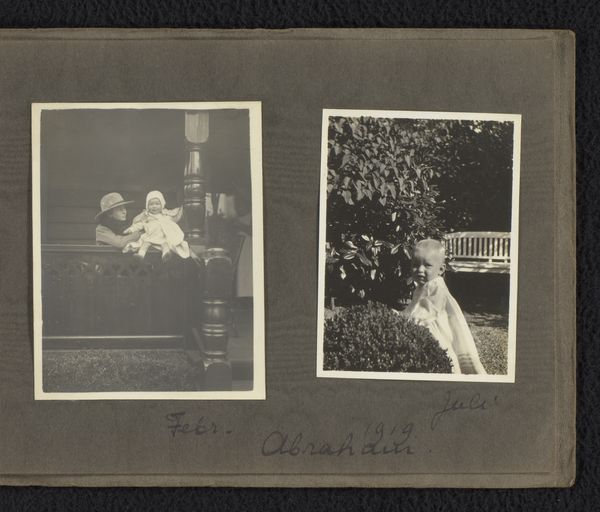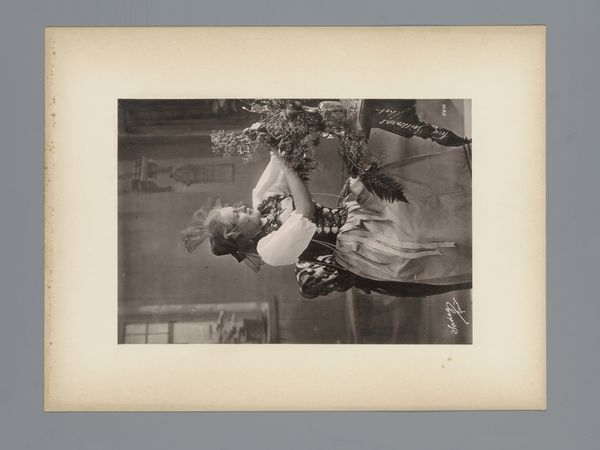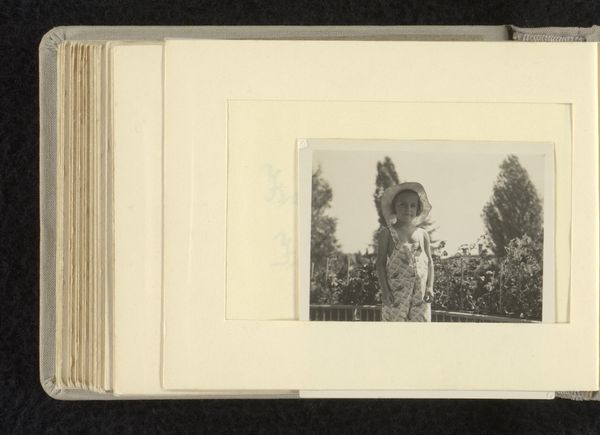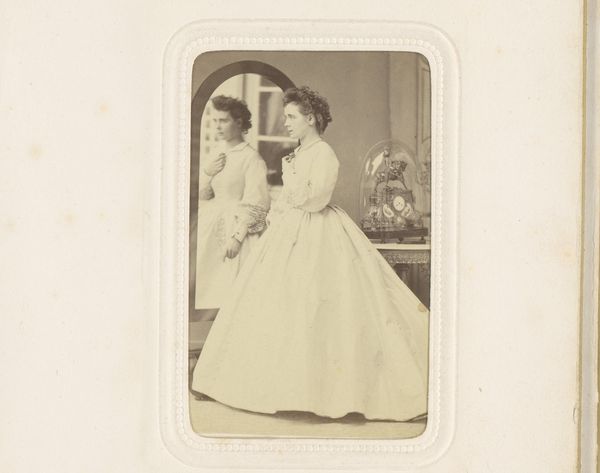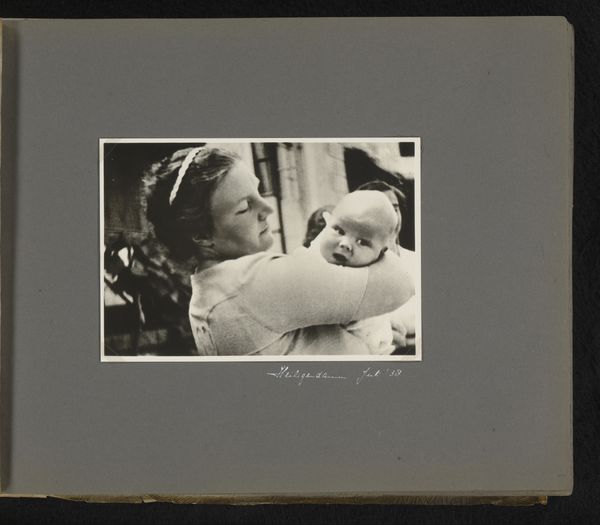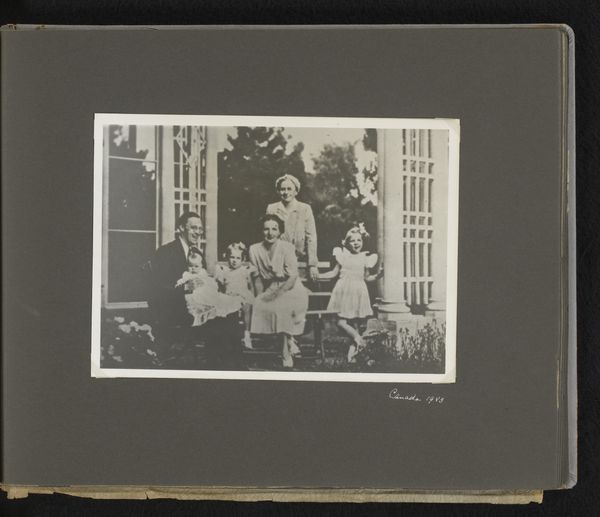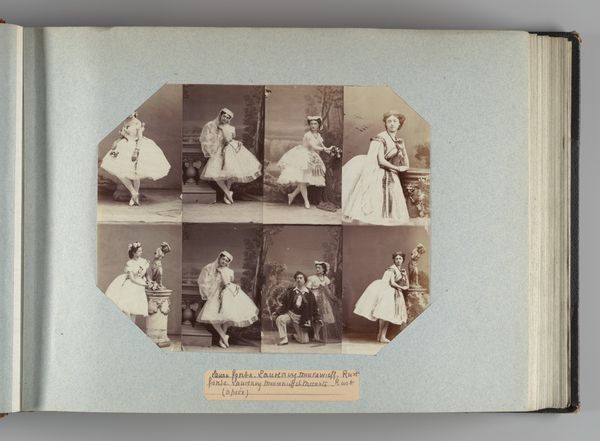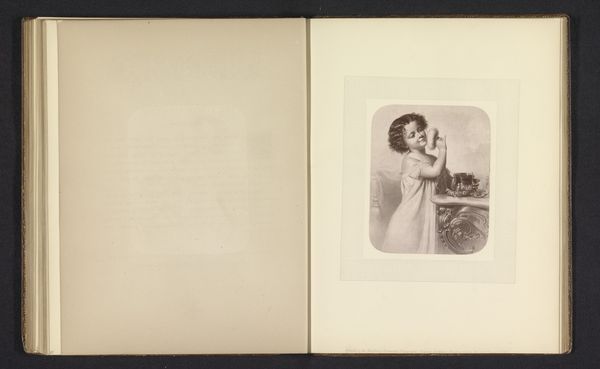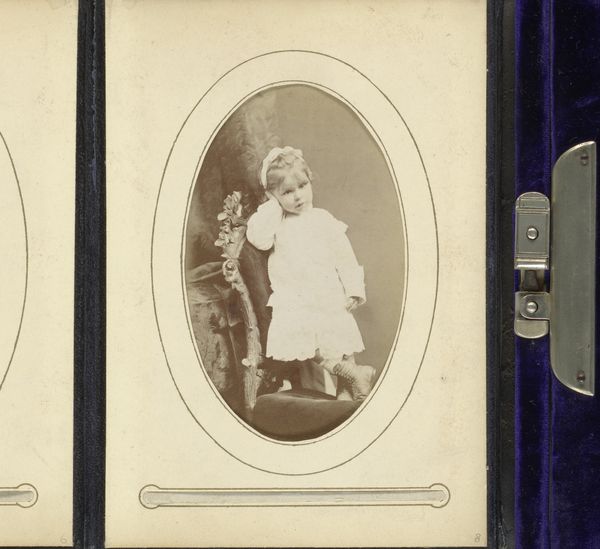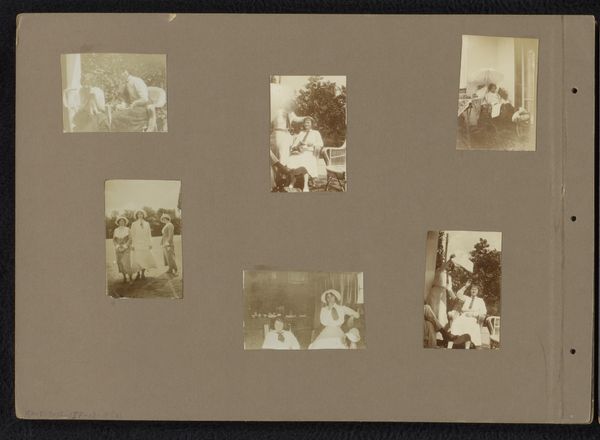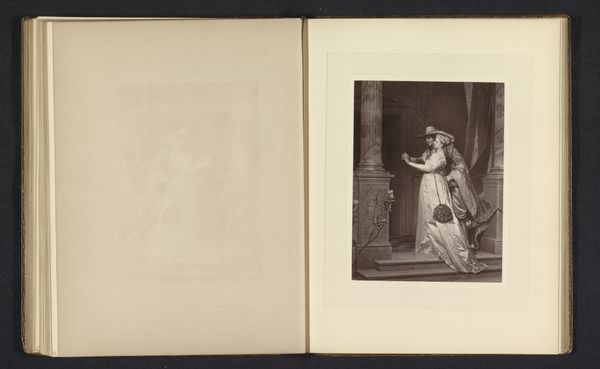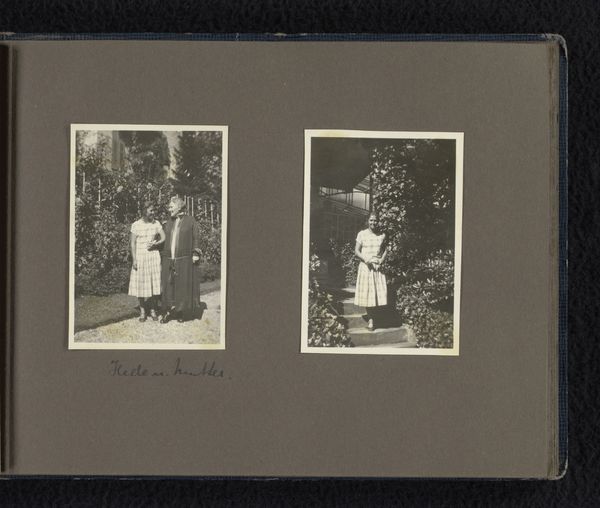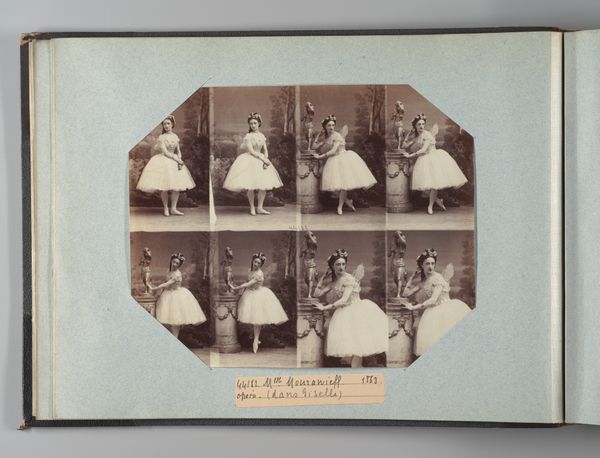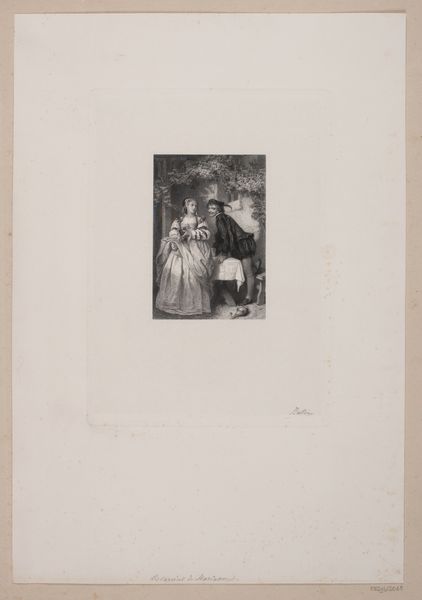
Isabel Wachenheimer tijdens haar verjaardag met pop in de hand op balkon 1932 - 1937
0:00
0:00
photography
#
portrait
#
print photography
#
wedding photograph
#
wedding photography
#
photography
#
historical fashion
#
realism
Dimensions: height 65 mm, width 65 mm
Copyright: Rijks Museum: Open Domain
Curator: This gelatin silver print, dating from between 1932 and 1937, captures Isabel Wachenheimer celebrating her birthday, cradling a doll on a balcony. Editor: Immediately, I'm struck by the weight of this image. It's delicate, like a forgotten dream, yet the tones carry such stark reality, almost melancholic. Curator: Absolutely. There's a tangible tenderness here, even in its monochrome presentation. It evokes the bittersweet ephemerality of childhood, that brief window of innocence. How do you read the materials and context in this instance? Editor: I find the materiality speaks volumes. This isn't just an image; it's an artifact. Gelatin silver prints, particularly those from this era, represent a specific labor process—the chemical manipulation, the darkroom patience. Framing also affects how the subject is percieved. You notice it is mounted, perhaps later than the original photo taking? That also can inform. Curator: I do; the jagged border of the print emphasizes its handcrafted quality. This also speaks to the larger role of photography during that time. Consider the growth in photojournalism, and amateur family portraiture alongside the development of more portable cameras; it allows a democratization of image-making in comparison to paintings for example. Editor: Yes! And the choice of photography is meaningful. Painting can become overly theatrical and present something which did not exist. Whilst this still happens in photography, people still generally expect "reality" through photographs which makes their messages even stronger. Do you believe that choice of realism in the shot indicates that a truth must be presented? Curator: Possibly; maybe we’re reading into this photograph from a post-war perspective of "authenticity." Maybe they were aiming for an accessible form. Still, in framing it like this, placing the child within this manufactured and composed photo reminds us of their agency and their world - for this moment only. Editor: Agreed, although looking at the making here, the framing really highlights the commercial context of photographic production for the family. It shows a commodification of memory - photography becomes a consumer product, transforming personal moments into objects of transaction. Curator: I guess we have, haven't we? That this image preserves a very singular personal moment against something far, far larger… it gets me. Editor: And me. These images become far more profound by knowing and discussing not only what, but also how it was made, so we do not diminish their value.
Comments
No comments
Be the first to comment and join the conversation on the ultimate creative platform.
